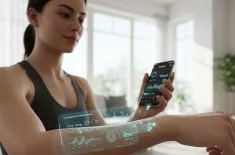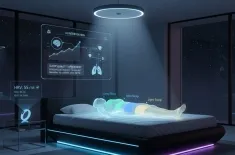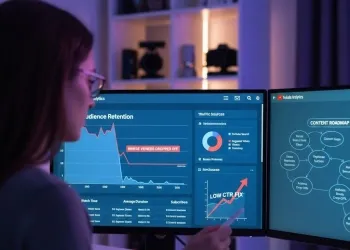Discover how remote patient monitoring (RPM) transforms heart failure management, leveraging connected device technology for early detection, reduced hospitalizations, and improved quality of life. Learn about benefits, challenges, and future trends in telecardiology.
Heart failure (HF) is a pervasive and debilitating chronic condition, affecting millions worldwide and representing a significant public health burden. It is characterized by the heart's inability to pump blood efficiently enough to meet the body's demands. The typical trajectory of the disease involves a cycle of worsening symptoms, emergency room visits, and costly, stressful hospital readmissions. Managing HF effectively requires constant vigilance to detect the subtle, often preclinical signs of decompensation, such as fluid retention or changes in hemodynamic parameters. Traditionally, this monitoring relied on infrequent, in-person clinic visits, a strategy that often proved reactive rather than proactive.
In recent years, a transformative solution has emerged from the intersection of medicine and digital technology: remote patient monitoring (RPM). RPM is a healthcare delivery method that uses technology to collect patient health data from outside conventional healthcare settings. For the heart failure population, this innovation is not just an incremental improvement; it is a vital digital lifeline, fundamentally shifting the paradigm of care from reactive management to proactive, personalized intervention.
The Foundation of RPM: Connected Device Technology
At the core of a successful remote patient monitoring program for heart failure is the array of sophisticated connected device technology used to collect and transmit physiological data. These devices span a range from simple, non-invasive home tools to advanced implantable sensors, each serving to paint a real-time picture of a patient’s cardiovascular status.
Non-Invasive RPM Tools
The most widely adopted non-invasive connected device tools include:
- Smart Scales: Daily weight monitoring is crucial, as a rapid increase often signifies fluid retention, a hallmark of worsening HF. Smart scales automatically record and transmit the patient's weight to the clinical team, triggering alerts for significant changes.
- Blood Pressure Monitors and Pulse Oximeters: These devices allow for routine measurement of vital signs in the comfort of the patient's home, helping to track the efficacy of medication titration and flag potential issues like hypotension or low oxygen saturation.
- Wearable Devices (Smartwatches and Patches): Modern wearables, like smartwatches with integrated ECG capabilities, monitor heart rate, heart rate variability, and can detect arrhythmias (e.g., atrial fibrillation) that are common in HF patients. Advanced patches can track multiple parameters, including activity levels and sleep patterns, offering insights into the patient's overall functional capacity.
Invasive and Advanced RPM Systems
For high-risk patients, more specialized and often invasive monitoring technologies provide unparalleled clinical data:
- Implantable Hemodynamic Monitors (e.g., CardioMEMS™): Perhaps the most impactful RPM technology for heart failure, this system involves a tiny, permanently implanted sensor that directly measures pulmonary artery (PA) pressure. Elevated PA pressure precedes symptomatic fluid overload by several weeks. Studies, such as the CHAMPION trial, have shown that PA pressure-guided management, made possible by this connected device, significantly reduces HF hospitalizations and improves the quality of life, regardless of the patient's ejection fraction.
- Device-Based Monitoring (ICDs and Pacemakers): Modern implantable cardioverter-defibrillators (ICDs) and cardiac resynchronization therapy (CRT) devices are inherently connected devices. They continuously monitor cardiac rhythm, device function, and collect diagnostic data like intrathoracic impedance (a surrogate for lung fluid). This data is wirelessly transmitted, providing clinicians with detailed information on arrhythmia burden and fluid status.
- Transforming Outcomes: The Benefits of RPM in Heart Failure
The power of remote patient monitoring lies in its ability to enable proactive disease management, a stark contrast to the traditional, episodic care model.
Early Detection and Prevention of Decompensation
The most compelling benefit of RPM is its capacity for early intervention. Changes in weight, blood pressure, or PA pressure can be detected days or even weeks before a patient experiences severe symptoms. This early warning, often delivered via a clinical alert system, allows the healthcare team (e.g., a dedicated heart failure nurse) to make preemptive adjustments to the patient’s medication (such as diuretic or vasodilator titration) or lifestyle. This preventative cardiology approach significantly reduces the rate of acute exacerbations and, critically, lowers the need for hospital readmissions, a major quality and cost driver in heart failure care.
Optimized Guideline-Directed Medical Therapy (GDMT)
A major challenge in heart failure management is the optimal titration of medication (GDMT). RPM provides the objective, real-time data necessary for clinicians to safely and effectively adjust doses of key medications, such as beta-blockers, ACE inhibitors/ARBs, ARNIs, and SGLT2 inhibitors. Daily vitals and symptom tracking ensure that the patient can tolerate dose increases, accelerating the path to optimal therapeutic targets and improving patient outcomes.
Enhanced Patient Engagement and Self-Care
Remote patient monitoring fosters greater patient adherence and self-management. By interacting daily with a connected device and seeing their health data, patients feel more accountable and become more knowledgeable about their condition. The technology facilitates regular communication with the care team, creating a strong patient-provider relationship and reducing feelings of isolation or anxiety about their chronic cardiac condition. This active participation is a key factor in the long-term success of any disease management program.
Economic Advantages and Healthcare Resource Optimization
For healthcare systems, RPM is increasingly recognized as a cost-effective strategy. By dramatically reducing the rate of costly heart failure hospitalizations and emergency department visits, the upfront investment in RPM technology and infrastructure is recouped over time. Studies focusing on advanced monitoring systems like CardioMEMS and other HF management platforms have demonstrated significant healthcare cost savings and a favorable incremental cost-effectiveness ratio (ICER) when measured by Quality-Adjusted Life Years (QALYs). The shift to virtual care also optimizes the time of healthcare professionals, allowing them to focus on the highest-risk patients.
Implementation Challenges and Solutions in Telecardiology
Despite its immense potential, the widespread implementation of remote patient monitoring for heart failure faces several practical and logistical challenges.
Technological and Data Overload Issues
A flood of continuous data from connected devices can lead to alert fatigue among clinical staff. To counter this, successful RPM programs must employ sophisticated data analytics and Artificial Intelligence (AI)/Machine Learning (ML) algorithms. These tools help to risk stratify patients, filter out "noise," and prioritize only the truly clinically actionable data, ensuring clinicians focus on the alerts that matter most.
Reimbursement and Regulatory Hurdles
The economic viability of RPM hinges on clear and sustainable reimbursement policies. The Centers for Medicare & Medicaid Services (CMS) in the U.S. has established specific CPT codes (e.g., 99453, 99454, 99457) for remote physiological monitoring services, which has helped spur adoption, particularly in the management of chronic conditions like heart failure. However, navigating these complex reimbursement guidelines and ensuring compliance with regulations like HIPAA for patient data security remains an ongoing task for providers.
Digital Literacy and Health Equity
Not all heart failure patients possess the same level of digital literacy or access to reliable internet service, creating a potential barrier to care known as the digital divide. Successful programs must include robust patient education and technical support. Simple, user-friendly devices and the availability of support staff, like dedicated RPM coordinators or telehealth nurses, are essential to ensure health equity and high patient compliance, particularly among older adult populations.
The Future Trajectory: AI, Wearables, and Personalized Medicine
The evolution of remote patient monitoring in cardiology is accelerating rapidly, driven by advancements in miniaturized sensors, communication networks, and intelligent software.
Integration of Artificial Intelligence (AI) and Machine Learning (ML)
The future of RPM for heart failure will be defined by the seamless integration of AI and Machine Learning. These technologies will move beyond simple alerting to develop highly personalized predictive analytics. AI models will analyze the multivariate data stream—weight, activity, sleep, rhythm, blood pressure, and even environmental data—to predict the likelihood of an imminent HF event days or weeks in advance with greater accuracy. This will allow for truly personalized medicine and ultra-proactive management.
Next-Generation Wearable and Implantable Devices
New generations of connected devices will offer greater sophistication and integration. Wearable patches that continuously monitor a wider array of biomarkers, such as continuous blood pressure (BP) and even non-invasive fluid status indicators, are on the horizon. Implantable sensors will become smaller, safer, and capable of monitoring more complex physiological interactions, solidifying their role as cornerstone tools for advanced heart failure management.
Comprehensive Virtual Care Platforms
RPM will increasingly be part of broader telehealth and virtual care platforms that combine synchronous video consultations, asynchronous patient-provider messaging, automated health coaching, and educational content. This holistic approach, often referred to as a virtual heart failure clinic, will ensure that patients receive comprehensive, coordinated care wherever they are, enhancing both clinical and patient-reported outcomes.
Conclusion: A Paradigm Shift in Chronic Care
Remote patient monitoring (RPM) has firmly established itself as a transformative force in the management of heart failure. By leveraging the power of the connected device, from smart scales to advanced pulmonary artery pressure sensors, it enables healthcare providers to move from the outdated model of reactive treatment to a powerful system of proactive, personalized, and preventative care.
While challenges related to technology integration, reimbursement, and health equity remain, ongoing innovation and thoughtful policy development are steadily overcoming these hurdles. As telecardiology continues to evolve, the widespread adoption of remote patient monitoring promises to lower healthcare costs, improve patient quality of life, and—most importantly—reduce the morbidity and mortality associated with this devastating chronic condition, securing a healthier future for heart failure patients worldwide.



































